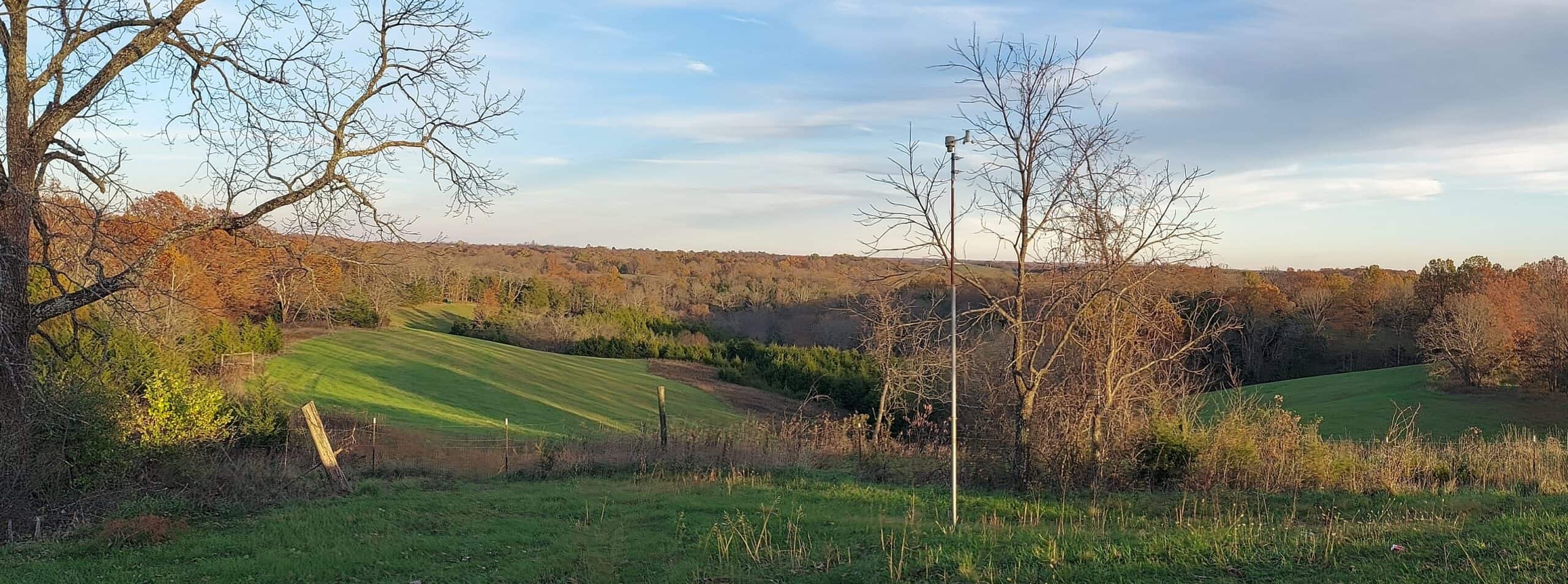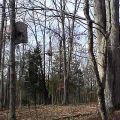Ladder Stand Renovations
The treestands at camp are in need of some long-overdue PM. Virginia is getting downright unsafe. Campground had a cracked weld. The rest are just showing the ravaged of time and rust. The last time I set one of these Hunters View Buddy Stands into a tree, George W. Bush was president and Hunters View was still in business. I’ve been tending them every year with new straps and spraying them with RustOleum. However, Hurricane Ike in 2008 did not do any of them any good and some have been in a tree since 2001.
I have shuffled a lot of stands in my time. These buddy stands are not something you want to try solo. They weigh close to 90 lbs and it’s all at the top. I have come up with a system for getting them in and out of trees that works well. It uses two people and two rope. I’ll cover the extraction first.
- I put take a loop of cord and make a noose out of it. I put it around the tree at the level of the seat. Into the loop that hangs loose, I insert a removeable chain link. This will act like a pulley when I lower the stand. By making a loop around the tree, I give the cord a chance to expand at some point in the future. This way it does not dig into the bark. Remember that if you are not replacing the stand immediately the cord and the link will be up there forever. Paracord works fine for this.
- Into the link, I run a half-inch rope. One end goes to the ground. The other gets attached to the yoke I tie in the next step. My partner runs the ground end back and ties it off on a tree well back from where the stand will drop.
- With some 1/4 inch rope, I tie a yoke to the back of the seat of the buddy stand. The way I construct the yoke is to take cheap poly rope. The whole thing takes about 6 feet. In the center, I tie a loop knot and then tie each end to the corner of the seat. The loop attaches to the rope in step #2. The reason for this yoke is so that the stand is attached evenly at the corners and hangs off a single point.
- I attach some more half-inch rope to the front of the floor of the stand. This will be used to pull the stand away from the tree and get it a little past vertical.
- I then begin to descend the ladder. On the way down, I cut the straps holding the stand to the tree. I leave the X-straps in place. Those get cut last.
- My partner stands at the foot of the ladder and applies pressure to hold the ladder against the tree. This is just an extra safety measure. I have never had a buddy stand come off a tree while I was setting it up, but it would not be fun if it did.
- Once I am down the ladder, cut the X-straps and make sure they’re free. I then go and grab the ground line while my partner grabs the second line that runs off the front of the stand.
- Before bringing the stand down, I dig out around the base of the ladder. A lot of times the end of the ladder gets embedded in the dirt. I missed this step the first time, and the ladder section bent.
- My partner pulls his line. The buddy stand comes to the vertical and the starts to drop. I put tension on my line and at this point my partner can drop his rope and move to a safe distance.
- I pay out the line and drop the stand gently to the ground.
Here we are at Campground the other day, dropping a buddy stand that had been in place for 10 years.
Here we are putting up the replacement.
Various notes and stray thoughts
When getting a stand up or down, as you will notice from the time-lapse videos, it’s all in the setup. For all those pics, the actual raising and lowering only take up 2-3 frames. That’s it! The rest is all preparation. If you do this right, it goes up in a jiffy.
One note on putting up the stand that differs from taking it down. You will need to insure the bottom of the stand is not going to move when you first start drawing it up. For those first few feet I am raing it, I position one person at the base with their feet planted on the ends. I also dig a little trench where I want to put the ladder base, so there is a spot for the ladder ends to grab and dig in.
Once the stand is up, I place a flat stone at the base of the stand to arrest the tendency of the ladder ends to sink into the ground. With a platter sized rock in place, the ladder sinks in only to the depth of the first rung.

What camera is that?
What’s taking those timelapse videos is my Bushnell Trophy Cam Essential. I’ve had it for 3 years now. I think you will agree it does a nice job.

I had it up to monitor the salt lick in the foreground– an easy way to take a census of what is on the property. It’s funny. We talk all about how intruding into the deer’s habitat will put them off. However, the camera registered deer coming to the lick within 24 hours each time we went there to do work. Yes, they did look up to see what was going on in the tree, but that was about it. A big buck dropped by at one point. He was wary. You could tell he’d been ’round the block and knew something was up. However, after a little bit of looking over his shoulder and being all tentative and such, he walked right up to the lick and chowed down. What’s funny is he did all this within 20 yards of the tree where the stand was located, making for an easy chip shot. You could tell he was a smart buck but he wasn’t all that smart.
This post has already been read 850 times!
Views: 10






Comments
Ladder Stand Renovations — No Comments
HTML tags allowed in your comment: <a href="" title=""> <abbr title=""> <acronym title=""> <b> <blockquote cite=""> <cite> <code> <del datetime=""> <em> <i> <q cite=""> <s> <strike> <strong>